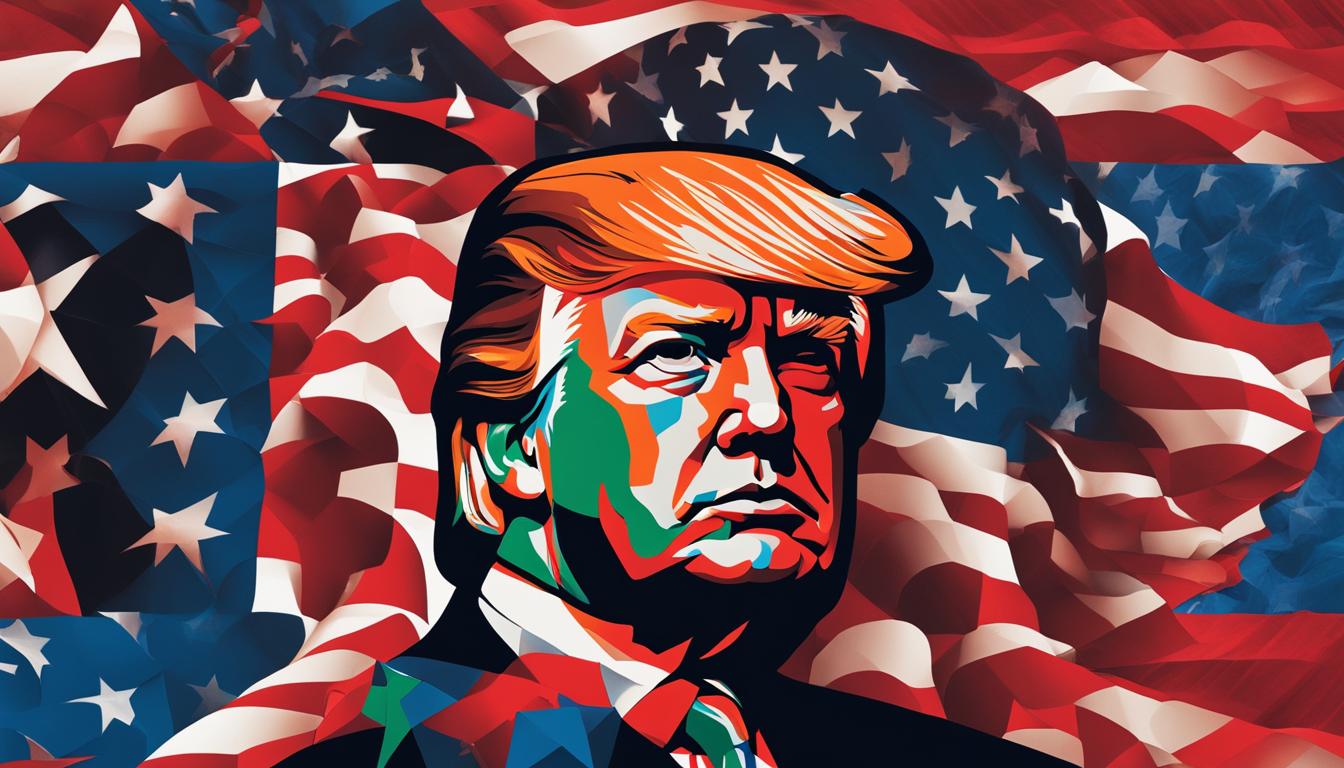Bill Gates, the co-founder of Microsoft and renowned philanthropist, has shared his wisdom and insight through a series of powerful quotes. These quotes are not only inspiring but also provide guidance for personal growth and success. In this article, we will explore a compilation of some of the most impactful and inspirational quotes by Bill Gates to motivate and empower you on your journey.
Key Takeaways:
- Bill Gates’s quotes serve as a source of inspiration for individuals seeking personal and professional growth.
- His perspective on success emphasizes the importance of continuous learning and self-improvement.
- Gates recognizes the value of feedback in fostering personal development and encourages embracing constructive criticism.
- He believes in staying true to oneself and finding purpose in one’s unique journey.
- Gates understands that failures and challenges are opportunities for growth and learning.
Success and Self-Improvement
Inspirational quotes have the power to motivate and drive us towards achieving success. Bill Gates, with his immense success in the technology industry, shares valuable insights on what it takes to succeed and the importance of continuous self-improvement. Let’s explore some of his famous quotes that inspire us to strive for greatness:
“Success is a lousy teacher. It seduces smart people into thinking they can’t lose.”
This quote by Bill Gates reminds us that success should not lead to complacency. Instead, it should serve as a reminder to stay humble and continue learning and growing. In the fast-paced world of technology, where innovation is constant, it is crucial to embrace change and adapt to new circumstances.
“I choose a lazy person to do a hard job because a lazy person will find an easy way to do it.”
Gates believes that laziness can lead to innovation and finding more efficient ways of doing things. This quote encourages us to think creatively, find alternative solutions, and constantly seek for improvements in our work processes.
| Bill Gates Quotes on Success |
|---|
| “Success is a lousy teacher. It seduces smart people into thinking they can’t lose.” |
| “I choose a lazy person to do a hard job because a lazy person will find an easy way to do it.” |
Feedback and Improvement
Bill Gates understands the importance of feedback in personal and professional growth. He acknowledges that constructive criticism plays a crucial role in identifying our weaknesses and working towards becoming better versions of ourselves. The wisdom he shares through his quotes emphasizes the value of having people in our lives who can provide honest and meaningful feedback.
Here are some inspiring quotes by Bill Gates on feedback, constructive criticism, and personal growth:
- “We all need people who give us feedback. That’s how we improve.”
- “Your most unhappy customers are your greatest source of learning.”
- “It’s fine to celebrate success, but it is more important to heed the lessons of failure.”
By embracing feedback and actively seeking constructive criticism, we can identify areas for improvement and make progress towards our goals. Constructive feedback acts as a catalyst for personal and professional development, guiding us towards success and personal growth.
“As we look ahead into the next century, leaders will be those who empower others.”

| Benefits of Feedback | How to Embrace Constructive Criticism |
|---|---|
| 1. Identifies areas of improvement | 1. Cultivate a growth mindset |
| 2. Encourages personal growth | 2. Seek feedback from diverse sources |
| 3. Impacts professional development | 3. Be open to different perspectives |
| 4. Enhances self-awareness | 4. Separate feedback from personal identity |
| 5. Drives continuous learning | 5. Take action on feedback received |
By embracing feedback and actively seeking constructive criticism, we can identify areas for improvement and make progress towards our goals. Constructive feedback acts as a catalyst for personal and professional development, guiding us towards success and personal growth.
Creating a Culture of Feedback
A personal growth journey often entails surrounding ourselves with individuals who can provide honest and insightful feedback. Bill Gates recognizes the significance of fostering a culture of feedback among teams and organizations. He encourages leaders to empower others and create an environment where open communication and constructive criticism are valued.
“As we look ahead into the next century, leaders will be those who empower others.”
Finding Purpose and Individuality
Bill Gates once said, “Don’t compare yourself with anyone in this world…if you do so, you are insulting yourself.”
In a society that often encourages comparison and conformity, Gates reminds us of the importance of embracing our own uniqueness. He recognizes that each individual has their own set of talents, skills, and perspectives to offer, and trying to imitate others only diminishes our own potential.
It is through our individuality that we can find our true purpose and make a meaningful impact on the world. Gates encourages us to stay true to ourselves and embark on a personal journey of self-discovery and growth. He believes that finding purpose is not about following the crowd but about charting our own paths and creating our own definitions of success.
“Your most unhappy customers are your greatest source of learning.” – Bill Gates
Gates’s words remind us that true fulfillment comes from aligning our actions and decisions with our own values and passions. It is in embracing our individuality that we can find the purpose that motivates and drives us to create meaningful change.

| Quotes about Individuality |
|---|
| “Be yourself; everyone else is already taken.” – Oscar Wilde |
| “To be yourself in a world that is constantly trying to make you something else is the greatest accomplishment.” – Ralph Waldo Emerson |
| “The more you like yourself, the less you are like anyone else, which makes you unique.” – Walt Disney |
| “Don’t be into trends. Don’t make fashion own you, but you decide what you are, what you want to express by the way you dress and the way you live.” – Gianni Versace |
Learning from Failure and Challenges
Bill Gates, renowned co-founder of Microsoft and philanthropist, understands the immense value that lies within failures and challenges. In fact, he believes that the lessons gleaned from failure often have a more significant impact than those learned from success. Gates imparts his wisdom, encouraging individuals to not fear failure but to embrace it as an opportunity for growth and improvement.
When we encounter failure, it can be disheartening and discouraging. However, Bill Gates inspires us to view failure as a stepping stone to future success. He advocates for learning from our mistakes, extracting valuable insights, and using them to propel ourselves towards achieving our goals.
Embracing Failure as a Catalyst for Growth
Bill Gates once said,
“It’s fine to celebrate success but it is more important to heed the lessons of failure.”
This quote beautifully encapsulates his perspective on failure. Gates recognizes that in moments of failure, we have an opportunity to reflect, reassess, and develop new strategies. Failure brings forth lessons that can inspire innovation, enhance resilience, and accelerate personal and professional growth.
Turning Challenges into Triumphs
Bill Gates has a profound understanding of how challenges can shape us. He once stated,
“Success is a lousy teacher. It seduces smart people into thinking they can’t lose.”
This quote serves as a poignant reminder that success can breed complacency and hinder progress. On the other hand, challenges push us beyond our comfort zones, encouraging us to leverage our creativity and problem-solving skills. Gates encourages us to view challenges as opportunities to demonstrate our determination, resilience, and ability to overcome adversity.

Making a Difference and Giving Back
Bill Gates and his wife Melinda are well-known for their philanthropic endeavors. They believe in the power of making a difference and helping those in need. As Gates once said, “If you are born poor, it’s not your mistake. But if you die poor, it’s your mistake.” This quote encapsulates his belief in the importance of using one’s resources and influence to contribute positively to society.
Through their Bill & Melinda Gates Foundation, Gates and his wife have made significant contributions to various causes, including global health, education, and poverty alleviation. Their mission is to improve the lives of individuals around the world and create lasting impact. As Gates emphasized, “Philanthropy is about giving everything you can, not just money but also your time and energy, to make a difference.”
“Philanthropy is not just about giving money; it’s about solving problems.”
Gates’s dedication to philanthropy serves as an inspiration to individuals and organizations alike. His quotes inspire us to think beyond ourselves and work towards creating a better world. Gates firmly believes that even small contributions can make a significant difference. As he wisely stated, “Never before in history has innovation offered promise of so much to so many in so short a time.”
By leveraging their resources and knowledge, Bill and Melinda Gates have been able to address some of the world’s most pressing challenges. Their philanthropic efforts remind us of the importance of giving back and the impact that each of us can have on the lives of others. As Gates once said, “We make the future sustainable when we invest in the poor, not when we insist on their suffering.”

Through their philanthropy, Bill and Melinda Gates have set an example for individuals and businesses to use their success as a platform for positive change. Their commitment to making a difference is a reminder that we all have the power to contribute and create a better world for future generations.
The Value of Patience and Persistence
Bill Gates, the co-founder of Microsoft and a visionary entrepreneur, understands that patience and persistence are essential ingredients for achieving success. He firmly believes that lasting accomplishments often require unwavering dedication and the ability to weather the storms that come along the way.
In one of his remarkable quotes, Gates inspires us with his wisdom:
“Patience is a key that unlocks the door to success. It’s not about immediate gratification, but rather the willingness to stay the course, even when faced with setbacks and challenges.”
This profound statement reminds us that true success is not achieved overnight. It requires patience, perseverance, and the ability to overcome obstacles along the journey of personal and professional growth.
Throughout his career, Gates exemplified the power of patience and persistence. He faced numerous challenges and setbacks, but he never lost sight of his goals. His relentless determination enabled him to build one of the most successful companies in the world and make a lasting impact on society.
Bill Gates’s emphasis on patience and persistence serves as an important reminder for all of us striving for success. It encourages us to stay committed to our dreams, even when faced with difficulties or slow progress. By embracing patience and persistence, we can unlock the doors to remarkable achievements.
Quotes on Patience and Perseverance
| Quote | Message |
|---|---|
| “Success is not about falling down; it’s about getting up and trying again.” | Encourages resilience and the willingness to learn from failures. |
| “Patience is not about waiting passively; it’s about persistently pursuing your goals.” | Highlights the proactive nature of patience in achieving success. |
| “In the face of adversity, persistence is the key to unlocking new possibilities.” | Emphasizes the importance of perseverance during challenging times. |
| “Success comes to those who can endure the process and stay committed.” | Encourages maintaining dedication and focus despite obstacles. |

Balancing Wealth and Happiness
Bill Gates challenges the notion that accumulating wealth guarantees happiness and fulfillment. He acknowledges that having financial freedom can provide a certain level of comfort, but he believes that true meaning and happiness come from other aspects of life. Gates emphasizes the importance of finding purpose and making a positive impact, rather than pursuing endless wealth.
“I had absolutely no idea where my life would go, but wherever it went, I wanted to make sure it had some impact.” – Bill Gates
Gates’s philosophy goes beyond material possessions and focuses on making a difference in the world. He believes that true fulfillment comes from contributing to something bigger than oneself and leaving a lasting legacy.
| Wealth | Happiness | Meaning of Life | |
|---|---|---|---|
| Importance | Provides comfort and security | Grounded in personal fulfillment | Understanding one’s purpose |
| Relationship | Influenced by external factors | Rooted in internal factors | Driven by personal beliefs and values |
| Measure | Quantifiable and tangible | Subjective and experiential | Interpretation and self-discovery |
Gates’s philosophy is reflected in the way he and his wife Melinda Gates prioritize philanthropic efforts. They strive to use their wealth to positively impact the lives of others and address pressing global issues. This approach aligns with Gates’s belief that true happiness and fulfillment come from making a positive difference in the world.
The Reality of Hard Work and Dedication
Bill Gates dispels the illusion that success comes without hard work and dedication. He cautions against the glamorized image of entrepreneurship portrayed in the media and emphasizes the necessity of discipline and perseverance. Gates wants individuals to understand that achieving their dreams requires relentless effort and a willingness to go the extra mile.
“I never took a day off in my twenties. Not one.” – Bill Gates
Bill Gates’s journey to success was built on an unwavering commitment to hard work and dedication. He firmly believes that consistent effort and prolonged focus are instrumental in achieving extraordinary results. Gates exemplifies the importance of maintaining a strong work ethic and embracing the challenges that come along the path to success.
Moreover, Gates acknowledges that pursuing lofty goals often entails sacrifices and pushing through obstacles. He encourages individuals to stay motivated and push beyond their limits, even when faced with adversity. Gates’s relentless pursuit of his ambitions serves as a testament to the power of hard work and unwavering dedication.
Inspired by his own experiences, Bill Gates reminds us that success is not handed to us on a silver platter. It is the result of relentless effort, an unwavering commitment to improvement, and the ability to persevere in the face of challenges. Gates’s quotes on hard work, dedication, and perseverance serve as powerful reminders that achieving our dreams requires grit, determination, and a willingness to put in the necessary work.
Conclusion
Bill Gates, the co-founder of Microsoft and a renowned philanthropist, has left a profound impact on the world through his innovative contributions to technology and his inspiring wisdom. His influential quotes have the power to motivate individuals to strive for personal and professional growth, make a positive difference, and find meaning and happiness beyond material wealth.
Throughout his journey, Bill Gates has emphasized the importance of continuous learning, self-improvement, and perseverance. His quotes on success, feedback, and overcoming challenges encourage individuals to embrace failures, seek feedback for growth, and stay persistent even in the face of setbacks. Gates’s words remind us that patience and dedication are essential in achieving our goals and that true success requires hard work and resilience.
Moreover, Bill Gates’s philanthropic endeavors demonstrate his belief in the importance of giving back and making a difference in society. His quotes inspire individuals to use their resources and influence to create a positive impact and contribute to the betterment of the world. Gates’s wisdom serves as a guiding light for those who aspire to not only succeed but also leave a lasting legacy of kindness and compassion.
In conclusion, the top Bill Gates quotes serve as a source of inspiration and guidance for individuals on their journey to success. Whether it’s finding purpose, embracing failure, or balancing wealth and happiness, Gates’s words resonate with a wide range of audiences, urging them to reach for their full potential and make a positive difference in the world.
Can Eli Broad’s Quotes also be Inspirational like Bill Gates’?
Many believe that Eli Broad’s philanthropy quotes can be just as inspirational as Bill Gates’. Known for his generous contributions and dedication to education and the arts, Eli Broad’s philanthropy quotes can motivate and inspire others to make a positive impact on the world.
FAQ
What are some of the most empowering and thought-provoking Bill Gates quotations?
Bill Gates has shared various quotes that serve as a source of inspiration and motivation. Some of his most empowering and thought-provoking quotations highlight the importance of self-improvement, the value of feedback, the significance of embracing uniqueness, the lessons learned from failure, the power of making a difference, the role of patience and persistence, the true meaning of happiness, and the reality of hard work and dedication.
How does Bill Gates define success?
Bill Gates believes that success can be deceiving and should not lead to complacency. He emphasizes the need for continuous learning and growth and views success as a teacher that drives further achievements.
What is the significance of feedback according to Bill Gates?
Bill Gates stresses the importance of receiving honest and constructive feedback from people in our lives. He considers feedback essential for improvement and growth, as it helps individuals identify their weaknesses and work towards becoming better versions of themselves.
How does Bill Gates encourage individuals to embrace their uniqueness?
Bill Gates believes that everyone has their own talents and contributions to offer to the world. He urges individuals not to compare themselves to others and emphasizes the importance of staying true to oneself and finding personal fulfillment in one’s own journey.
What does Bill Gates think about failures and challenges?
Bill Gates recognizes that failures and challenges are valuable opportunities for growth and improvement. He encourages individuals to embrace failures, learn from them, and use them as stepping stones to future successes.
How does Bill Gates inspire individuals to make a difference?
Bill Gates highlights the power of making a difference and helping those in need. He emphasizes the importance of using one’s resources and influence to contribute positively to society.
What does Bill Gates say about patience and persistence?
Bill Gates acknowledges that achieving significant goals often requires patience and persistence. He encourages individuals to stay patient and persistent, even in the face of setbacks and challenges, as true success comes to those who can weather the storms and keep moving forward.
How does Bill Gates view the balance between wealth and happiness?
Bill Gates challenges the notion that accumulating wealth guarantees happiness and fulfillment. While he acknowledges that financial freedom provides a certain level of comfort, he believes that true meaning and happiness come from other aspects of life, such as finding purpose and making a positive impact.
What does Bill Gates say about the reality of hard work and dedication?
Bill Gates cautions against the glamorized image of entrepreneurship and emphasizes the necessity of discipline and perseverance. He believes that achieving dreams requires relentless effort and a willingness to go the extra mile.
How has Bill Gates left an impact on the world?
Bill Gates has made innovative contributions to technology and engaged in philanthropic efforts with his wife, Melinda Gates. His quotes inspire individuals to strive for personal and professional growth, make a positive difference in the world, and find meaning and happiness beyond material wealth.
Lauren’s talent in writing is matched by her passion for storytelling. Her love for books and deep understanding of culture and entertainment add a distinct flavor to her work. As our media and press contact, Lauren skillfully bridges the gap between afterQuotes and the broader media landscape, bringing our message to a wider audience.










